Restoring Synergy
Learn something now! - Watch the Online CEU Course Trailer

All Access Online CEU for PT, PTA and OT for $189
BEST VALUE - Includes this course and all our online courses
Subscribe Todaytheaters Purchase Now, Instant Online Course Access
Restoring Synergy
$175.00
- CE Hours: 10.0 hrs, 1.0 CEU
- Delivered: Online
- Instant Online Access, 365 days of access, Mobile Ready
- No auto-renewal for this option
All Access Online CEU for PT, PTA and OT
$189
All Access Online CEU for PT, PTA and OT Subscription
1 Year Access with Annual Renewal
State specific course completion certificates.
Chat support
Prices are in US dollars- 12 months of access to all online ceu courses, course tests and state approval certificates.
- Meet all your CE requirements. Pre-approved for PT, PTAs in AK, AL, AZ, CA, CO, CT, DC, DE, GA, HI, IA, ID, IL, IN, KS, MA, ME, MI, MO, MS, MT, NC, ND, NE, NH, NM, NV, NY, OR, PA, RI, SC, SD, TN, TX, UT, VA, VT, WA, WI, and WY.
- AOTA approved.
- Designed for Physical Therapists, Occupational Therapists, Athletic Trainers and Assistants.
- Access to future courses and content.
- Start, stop and resume, right where you left off in a course.
- Real patient interviews.
- Medical expert contributors.
- 3D anatomy and medical illustrations.
- Easy to use learning system for fast access to your courses.
- Award winning content.
- Top instructors teaching evidence based skills and techniques.
Why should a physical therapist, occupational therapist or athletic trainer take this advanced vestibular continuing education course?
Complex vestibular patients often present with symptoms related to cervicogenic dizziness, atypical BPPV, Persistent Postural-Perceptual Dizziness (PPPD), Vestibular migraine, Acoustic schwannoma, superior canal dehiscence. This advanced vestibular course provides the tools to effectively evaluate and treat patients with these and other complex vestibular related comorbidities.
Rehab clinical tools instructed in this vestibular rehab course that will enhance your functional outcomes.
- Differentiate various types and results of BPPV tests.
- Guidelines on progressing complex vestibular disorders.
- Clinical pearls for performing optimal oculomotor exams.
- Techniques to identify peripheral vs central vestibular dysfunction.
Specific instruction that will enhance your understanding and ability to deliver better patient care.
- Screen for comorbidities that impact vestibular function.
- Extensive lab techniques with step-by-step instruction.
- Screen for fistula, cervicogenic dysfunction, acoustic neuroma, migraine and all canals
Features unique to this advanced vestibular course
- Real patient case studies address bilateral hypofunction, assessment, and progression of treatment with the intent of getting the Samuel Hunter, MD, a top neurologist, explains the vestibular system and discusses the complexities of BPPV and Meniere’s
- Patient diagnoses discussed include cervicogenic dizziness, atypical BPPV, Persistent Postural-Perceptual Dizziness (PPPD), Vestibular migraine, Acoustic schwannoma, superior canal dehiscence, bilateral hypofunction.
Professional Accreditation
This is an advanced level course applicable for PT, PTA, OT, AT.Physical Therapy Accreditation: For specific state information use the accreditation verification menu and select your state of license. AOTA: provider #4487, Occupational therapy professional development activity: Occupational Therapy Service Delivery, evaluation and intervention, and Foundation Knowledge: human body, development, and behavior. Athletic Trainers: BOC provider #P2047, category A. This course has not been submitted for Evidence-Based BOC approval.
fact_check Accreditation Verification
Online CEU Course for PT, PTA, OT State Accreditation
Highlights of this Online Continuing Education Course
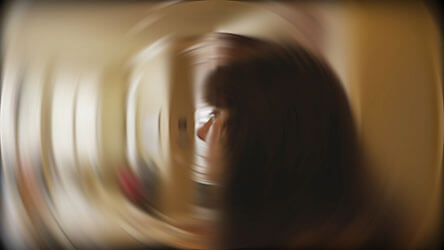
Upon completion of this course the participant will be able to:
- Perform a comprehensive oculomotor exam and interpret findings for the management of vestibular dysfunction.
- Describe the physiological process of BPPV and explain how specific techniques can help resolve the symptoms associated with BPPV.
- Describe common and complex causes of vestibular dysfunction.
- Identify vestibular complications post mTBI and properly assess for dysfunction.
- Identify psychological problems, such as PPPD, that can affect the management of vestibular disorders and modify treatment programs and goals to incorporate plans to address the psychological problem.
- Recognize episodic vestibular disorders like Meniere’s disease and migraines.
- Identify the role of migraines as both a primary and secondary source that contributes to dizziness and the impact on function and rehab.
- Identify peripheral vestibular hypofunction as it relates to fistula and acoustic schwannoma and the management of bilateral vestibular hypofunction.
- Recognize positional vertigo that has a central etiology.
- Recognize when it is appropriate time to refer a patient to other medical practitioners and present with professional communication skills to the team.
- Identify effective communication skills to understand the whole person, their specific goals to the environment they live in.
- Develop comprehensive differential diagnostic skills and techniques to identify the underlying cause of dizziness.
- Identify the clinical presentation of patients with superior canal dehiscence and current treatment strategies.
- Perform repositioning maneuvers to treat canalithiasis and cupulolithiasis for all the semicircular canals.
Learn From the Expert - Laura Morris, PT, NCS

Laura Morris, PT, NCS is a physical therapist and lecturer with over 25 years of experience in the management of adults with neurologic disorders.
Learn More about Laura MorrisUnderstanding the Vestibular System
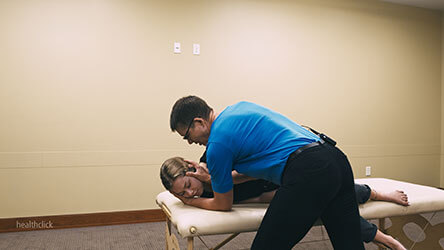
- Learn from an expert vestibular/dizziness physician specialist on the anatomy and function of the vestibular system
- Build a foundation of examination and treatment on an understanding of the Vestibular System
- Understand vestibular dysfunction and common causes
Develop a Greater Understanding of the Oculomotor System and Impairments
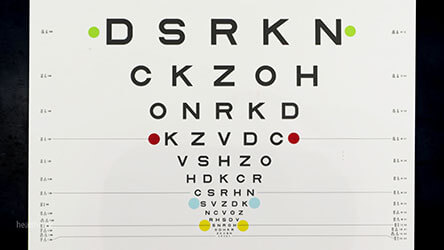
- Vestibular system impairment oculomotor screen
- Central involvement, anatomy postural control, autonomic nervous system, oculomotor exam
- Ocular assessment-nystagmus
- Fistula problems - Explanation of a positive test for fistula, vestibular oculomotor screen
- How to apply test results into practice
- Medications and convergence impairments
- Explore intervention for oculomotor impairments
- Intervention and challenges with accommodation
Explore Anxiety and Persistent postural-perceptual dizziness (PPPD)
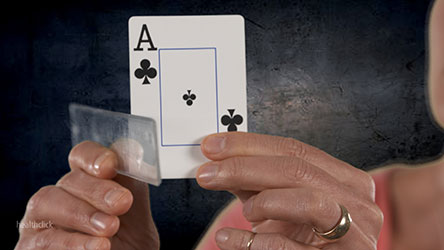
- The issue of psychological factors that may also affect dizziness
- Symptoms of panic attack
- Reported symptoms of anxiety
- Persistent Postural-Perceptual Dizziness (3PD or PPPD)
- Characteristics of PPPD
- Assessment
- Intervention
Benign Paroxysmal Positional Vertigo (BPPV)
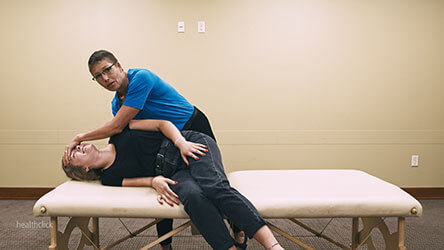
- New studies
- Terms and definitions
- Etiology of BPPV
- Assessment
- Canal identification
- Post maneuver instructions
- BPPV management
- Other BPPV considerations
- Cenral positional nystagmus vs. BPPV
- Self maneuvers
Complex Vestibular Disorders

- Episodic dizziness: Meniers vs. Migraine
- Episodic Vestibulopathy
- Meneries disease, diagnosis and interventions
- Migraine, diagnosis, and intervention
- Migraine aura
- Vestibular migraine, diagnosis and intervention
- Peripheral Vestibular Hypofunction
- Vestibular Labyrinthitis
- Vestibular Neuritis
- Perilymphatic Fistula, diagnosis, and treatment
- Superior Canal Dehiscence Syndrome, signs and symptoms, diagnosis and intervention
- Acoustic schwannoma
- Bilateral vestibular hypofunction/loss
- Clinical Practice Guideline for Peripheral Vestibular Hypofunction
Patient Case Studies of Complex Vestibular Disorders
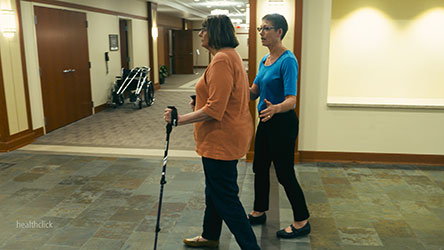
- Bilateral hypofunction due to toxicity
- Assessment utilizing standard assessment tools
- Progression of function - inactivity to walking with poles
- Patient challenges to recovery
- ADL’s and community ambulation
Demonstration and Explainations of Vestibular Tests
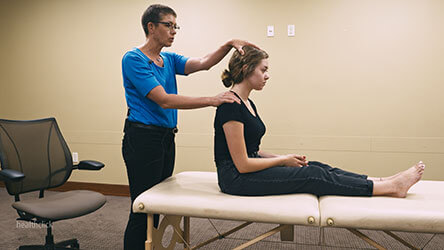
- Sermont Maneuver-description and demo
- Deep Head Hanging Maneuver
- Anterior Canal Maneuver
- Anterior Canal Kim Maneuver
- Canalithiasis vs cupulolithiasis
- Horizontal canal canalithiasis
- Liberatory Maneuver
- Alternate Maneuver for Cupulolithiasis
- Dynamic Acuity Test
- Head Thrust Test
Tips and Commonly Asked Questions on Specific Topics
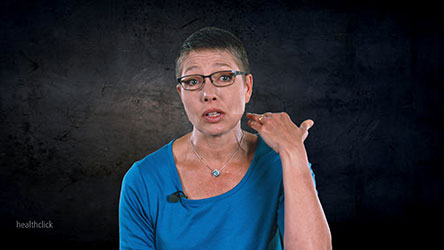
- Oculomotor pearls to testing
- Multiple canal involvement
- Diplopia
- Endpoint nystagmus
- Spontaneous nystagmus
- Smooth Pursuit
- Saccadic test
- Saccadic intrusions
- Gaze evoked nystagmus
Course Test - Evaluate your knowledge

- Use the Healthclick proprietary online education system which provides the online student with:
- Worldwide access to high definition video, anatomical animations and images, and written information
- The highest quality film in the industry, you can see the difference!
- Stop and resume within a course, the Healthclick system will optimize your course based on your device, connection and remembers where you left off.
- Real-time course updates. We are always adding to each courses, updating content, adding animations, these are not static courses!
- Evaluate your knowledge with the course test on any device.
- Print your state course certificate for CE credit.
- Take the online test as many times as need in order to achieve a 70 % or greater score.
Responsible CME® - Online CEU Course Testimonials
67.225.255.111Laura is an excellent teacher who is able to impart her huge knowledge base in a down to earth and relatable manner. I would definitely like to take a course from her again. -- Christine, Physical Therapist
This course helped me, a relative beginner in vestibular rehab, better understand and retain information related to the diagnosis and management of peripheral and central vestibular disorders. -- Crispino, PT
I highly recommend this course. It is current, evidence based and includes excellent canal repositioning videos to aid in reproducing these maneuvers in the clinic. Laura Morris is an engaging speaker. -- Susan, PT
This is a great course especially for vestibular dx and if you are wanting to go into the specialty arena of vestibular therapy. -- Alexandra, Physical Therapist
content was clear and informative. -- Lyndsay, PT
Laura Morris is an exceptional presenter. She knows more than I will ever hope to know about the Vestibular System and is gifted at sharing her knowledge. -- Helen, OT
good intro to vestibular information. -- Melissa, PT
Very good course if you have some background already in Vestibular and you want to advance you knowledge in being able to take care of this population -- Carolyn, Physical Therapist
This course was very helpful in better understanding vestibular disorders and the video demonstrations for BPPV were a very nice touch -- Sarah, PT
very knowledgeable and personable -- Debbie, PTA
This course was very well done for an online course. I appreciated the videos of the maneuvers and the clear instructions that were provided. This course will help me fine tune a lot of my skills with vestibular evaluation and treatment. -- Megan, PT